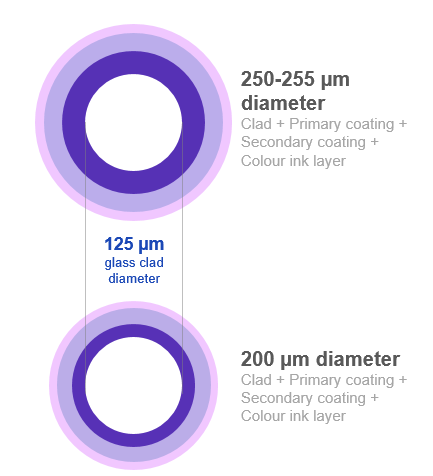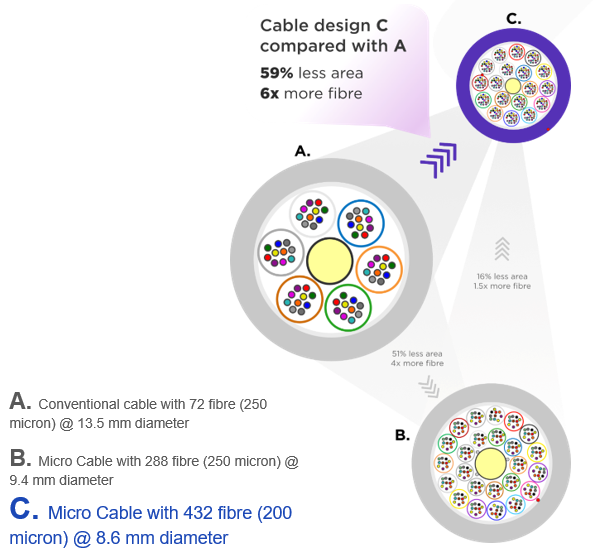We discuss the following topics in this blog:
- How to Facilitate High-Speed Network Infrastructure?
- What are the Major Challenges?
- How STL’s Innovative Fibre Solutions are Redefining Connectivity?
- STL’s slimmer dia cables- BulletTM Series Micro Cable.
In addition to these topics, we shall also be answering the following FAQs:
- What is WiFi?
- What is an Optical Fibre Cable?
Contents
How to Facilitate High-Speed Network Infrastructure?
In the past couple of years, we have become digitally empowered as a country. Our rural areas are getting connected through high speed networks, our language of communication and business is changing, our borders are getting hi-tech…heck, we are even landing on the moon!
The future looks brighter and more connected than ever.
To continue with this digital growth, we need high speed network infrastructure to expand into each and every corner of the city. This means more and more fibre access points to keep us connected and enable the world communicate seamlessly. The demand for fibre cables expected to be laid down across the country is going to skyrocket. But there is a foreseeable challenge.
What are the Major Challenges?
Here are the problematic areas. The demand requires more fibre in cables and ducts both. But the existing infrastructure- already installed ducts- are limited by their current size. Also, more fibre in a cable makes the cable diameter go really high which in turn increases the fill factor i.e the ratio of cable diameter to duct diameter. This increased fill factor makes cable installation difficult and costly. So, the need of the hour is to be able to pack more fibre in a very limited cable diameter, so that they can either be “Overblown” in existing ducts or blown and thus installed faster in new ducts.
How STL’s Innovative Fibre Solutions are Redefining Connectivity?
STL’s innovative fibre cable solutions offers just what you are looking for. Our product and design innovations has led us to come up with two possible solutions. Reduce the size of fibre and pack more fibre in a limited space. This innovation allows you to accommodate higher fibre counts and maximize the capacity of your existing network infrastructure. These fibre come at a reasonable cost, are fast deployable, flexible, reliable and above all totally compatible with technologies that are yet to come, say, N-GPON etc.
Currently, the standard fibre diameter used is about 250um. STL’s Micro Bow-Lite and Micro BOW LITE E single mode optical fibre is a slim optical fibre with 200 um diameter with low water peak attenuation. In comparison, this next generation fibre is 20% slimmer and reduces macro bend losses by 10-20x. Its low bend sensitivity cuts optical losses due to bends and turns and significantly contributes in bringing down the cost of network provisioning. Furthermore, de-skilling of field termination and splicing reduces the high manpower cost required for such network rollouts.

STL’s slimmer dia cables- BulletTM Series Micro Cable
When it comes to optical fibre cables, STL’s slimmer dia cables- BulletTM Series Micro Cable- are touted as the world’s slimmest. Aided with 200 micron fibre and an innovative product mix used for construction of individual fibre modules, they are a perfect fit for more fibre in limited space.
Here is a comparison of how STL’s 432F next gen micro cable has 6x more fibre in 59% lesser area as compared to a conventional loose tube cable.

With solutions targeted at different end applications such as 5G, FTTx, Network Augmentation, we certainly have some of the best optical cable designs in the market, uniquely suited to different customer needs. We promise a quality superior to others and ensure utmost customer satisfaction. Look out for our next blog that will talk about STL’s in house testing track for micro cables. A capability that ensures quality above the standards set by the IEC.
FAQs
What is WiFi?
Put simply, WiFi is a technology that uses radio waves to create a wireless network through which devices like mobile phones, computers, printers, etc., connect to the internet. A wireless router is needed to establish a WiFi hotspot that people in its vicinity may use to access internet services. You’re sure to have encountered such a WiFi hotspot in houses, offices, restaurants, etc.
To get a little more technical, WiFi works by enabling a Wireless Local Area Network or WLAN that allows devices connected to it to exchange signals with the internet via a router. The frequencies of these signals are either 2.4 GHz or 5 GHz bandwidths. These frequencies are much higher than those transmitted to or by radios, mobile phones, and televisions since WiFi signals need to carry significantly higher amounts of data. The networking standards are variants of 802.11, of which there are several (802.11a, 802.11b, 801.11g, etc.).
What is an Optical Fibre Cable?
An optical fibre cable is a cable type that has a few to hundreds of optical fibres bundled together within a protective plastic coating. They help carry digital data in the form of light pulses across large distances at faster speeds. For this, they need to be installed or deployed either underground or aerially. Standalone fibres cannot be buried or hanged so fibres are bunched together as cables for the transmission of data.
This is done to protect the fibre from stress, moisture, temperature changes and other externalities. There are three main components of a optical fibre cable, core (It carries the light and is made of pure silicon dioxide (SiO2) with dopants such as germania, phosphorous pentoxide, or alumina to raise the refractive index; Typical glass cores range from as small as 3.7um up to 200um), Cladding (Cladding surrounds the core and has a lower refractive index than the core, it is also made from the same material as the core; 1% refractive index difference is maintained between the core and cladding; Two commonly used diameters are 125µm and 140µm) and Coating (Protective layer that absorbs shocks, physical damage and moisture; The outside diameter of the coating is typically either 250µm or 500µm; Commonly used material for coatings are acrylate,Silicone, carbon, and polyimide).
An optical fibre cable is made up of the following components: Optical fibres – ranging from one to many. Buffer tubes (with different settings), for protection and cushioning of the fibre. Water protection in the tubes – wet or dry. A central strength member (CSM) is the backbone of all cables. Armoured tapes for stranding to bunch the buffer tubes and strength members together. Sheathing or final covering to provide further protection.
The five main reasons that make this technology innovation disruptive are fast communication speed, infinite bandwidth & capacity, low interference, high tensile strength and secure communication. The major usescases of optical fibre cables include intenet connectivity, computer networking, surgery & dentistry, automotive industry, telephony, lighting & decorations, mechanical inspections, cable television, military applications and space.















